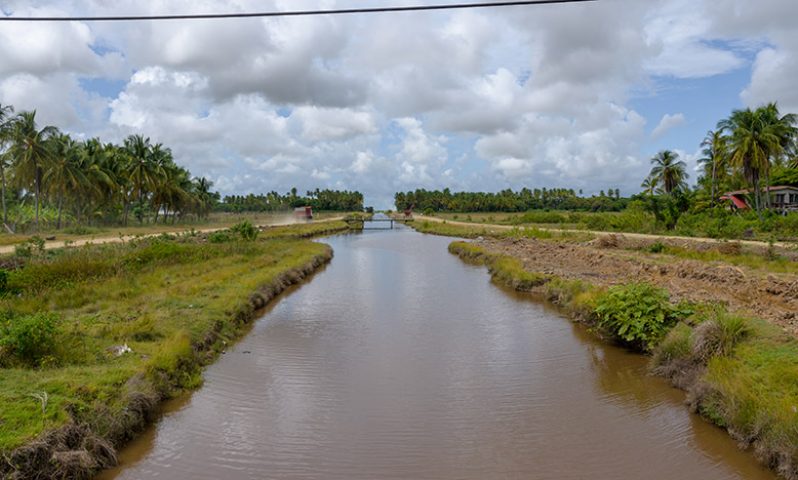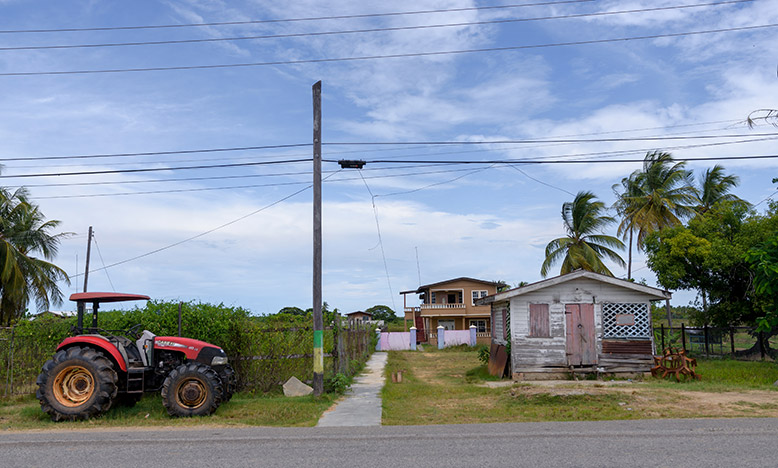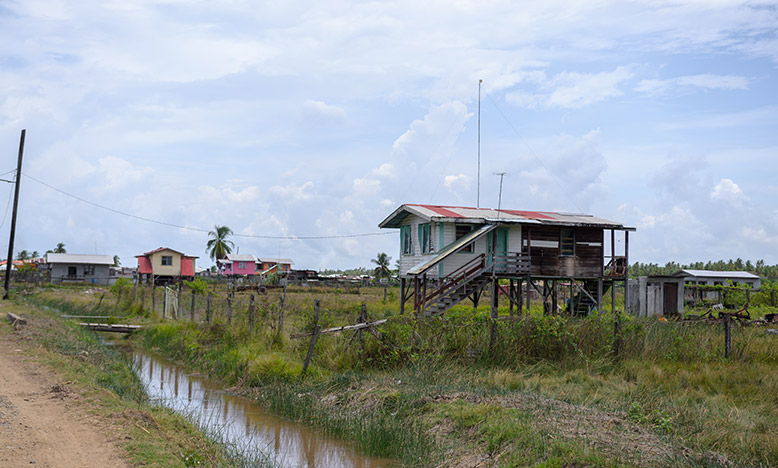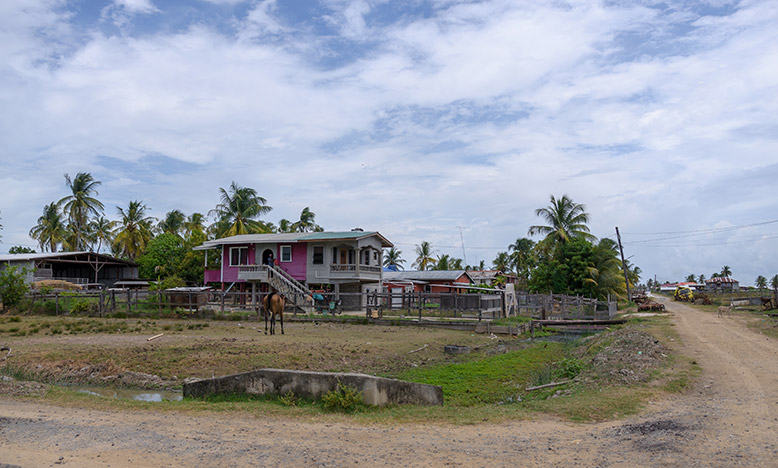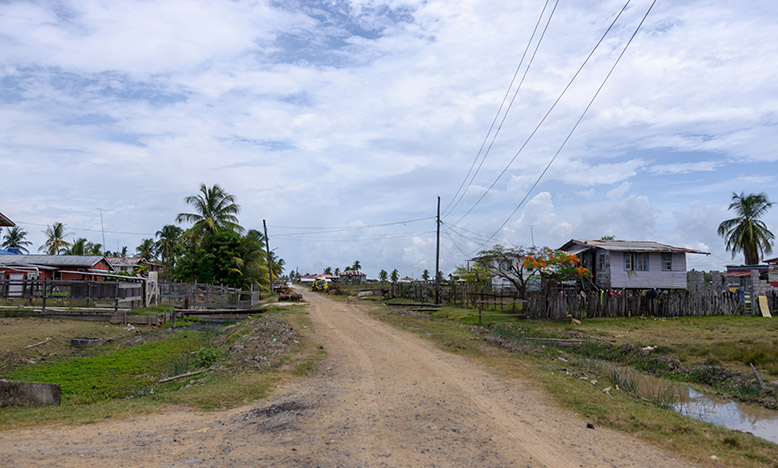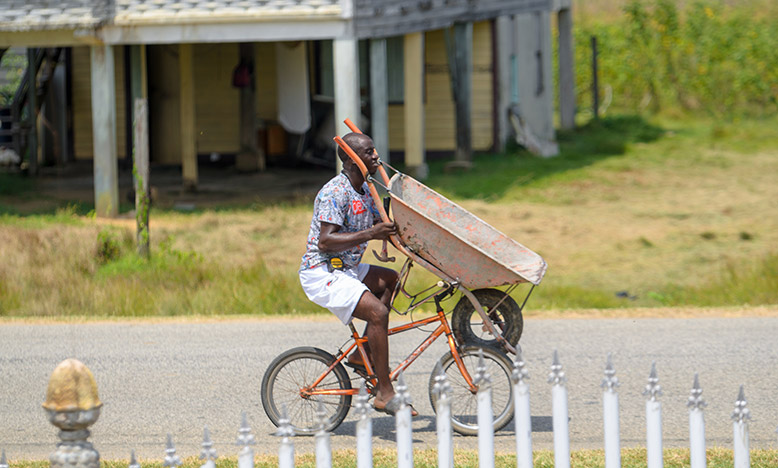A quiet, agriculture-based community
LAST week the Pepperpot Magazine visited the quiet, breezy countryside village of Tempie, West Coast Berbice, to highlight the locals’ way of life.
Tempie Village is sandwiched between Britannia and #30 Village (Union) and it is fairly large with poultry, livestock and cattle farming, rice and cash crops farming being the primary source of income for villagers.
The village has vast backlands used primarily for rice cultivation and in the community, many large and small-scale farmers would sell their paddy to rice millers.
It was said that the village had its own rice mill years ago, but it was left abandoned when the owners migrated and the building fell apart slowly.
Tempie is a roadside village where the public road is and there are dwelling houses on both sides of the highway. There is only one internal street with small alleyways leading to sections of the village that serve as a shortcut.
The community has four shops, no schools and no other facilities. These are sourced in neighbouring villages and children have to leave the village for school.
A handful of people hold jobs outside the village within both the private and public sectors and some are self-employed.
The people of Tempie are normal folk who have a very simple way of life which involves hard work and being industrious to earn.
They are also very friendly, and welcoming and would even stop whatever they are doing to take a break and have a chat with visitors.
Even though Tempie isn’t a spotlight community, the locals like it just that way. Simplicity and peace are their way of retreating to their homes after a full day’s work.
In almost every yard, the locals grow their own food, rear their own chickens, ducks, goats, sheep and cows.
It is one of those villages where the fowls and animals roam freely and they are plentiful.
The people of Tempie Village are economically-inclined and save by planting their own fruits and vegetables.
Some people rear chickens such as meat birds, layers and ducks to sell the eggs and poultry to wholesale buyers from outside the community.
The population of Tempie Village is said to be around 300, with people of mixed ethnicities who co-exist in peace.
The people of the community are mostly related by blood and they are neighbourly and look out for each other.
It is also one of those quiet villages where the people do not lock their doors nor have grille work because it is a safe place to reside, and the people are familiar with each other.
Almost all the locals have lived all their lives in the village; some have migrated but have their houses in the village and would return annually to spend time at their place of birth.
Some elders have since expressed their desire to return to live in Guyana fully and are in the process of occupying their lands within the village by constructing modern-style houses.
Locals reported that Tempie Village was a rice and ground provision plantation and, after slavery was abolished, it was bought by the Bourne siblings, three brothers who hailed from Corentyne, Berbice.
And it was some years after the lands were sold to individuals and most of the people that reside in Tempie Village are descendants of the Bourne brothers.
The village consists of persons of African and Indian descent and Portuguese, all of whom are very industrious.
Some of the elders have passed away, but a few are still living in the community and the young generation has jobs while the mature population are farmers.
Tempie Village also has a boutique that sells brand-name clothing and other items and it is also a bill payment outlet, a service the locals utilise to transact business without having to leave the community.
The community is close-knit and a very traditional place with like-minded people who choose to remain in their home village since it is their oasis.
The nearest hospital is at Fort Wellington and health centres and schools are located in the villages nearby.
Tempie Village is the place to live if you want to enjoy a quiet yet rewarding life as a farmer.



.jpg)



